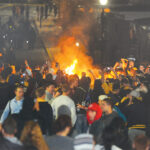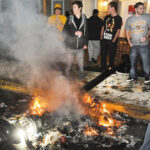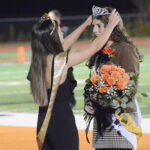MFD leadership says changes have doused unwanted tradition of couch burning
- Photos by Ron Rittenhouse Fires are shown on Grant Avenue in Morgantown in May and October 2012. Morgantown ranked second nationally to Columbus, Ohio, between 2008 and 2012 in street fires, according to U.S. fire statistics. Los Angeles came in third.
- Fires are shown on Grant Avenue in Morgantown in May and October 2012. Morgantown ranked second nationally to Columbus, Ohio, between 2008 and 2012 in street fires, according to U.S. fire statistics. Los Angeles came in third.
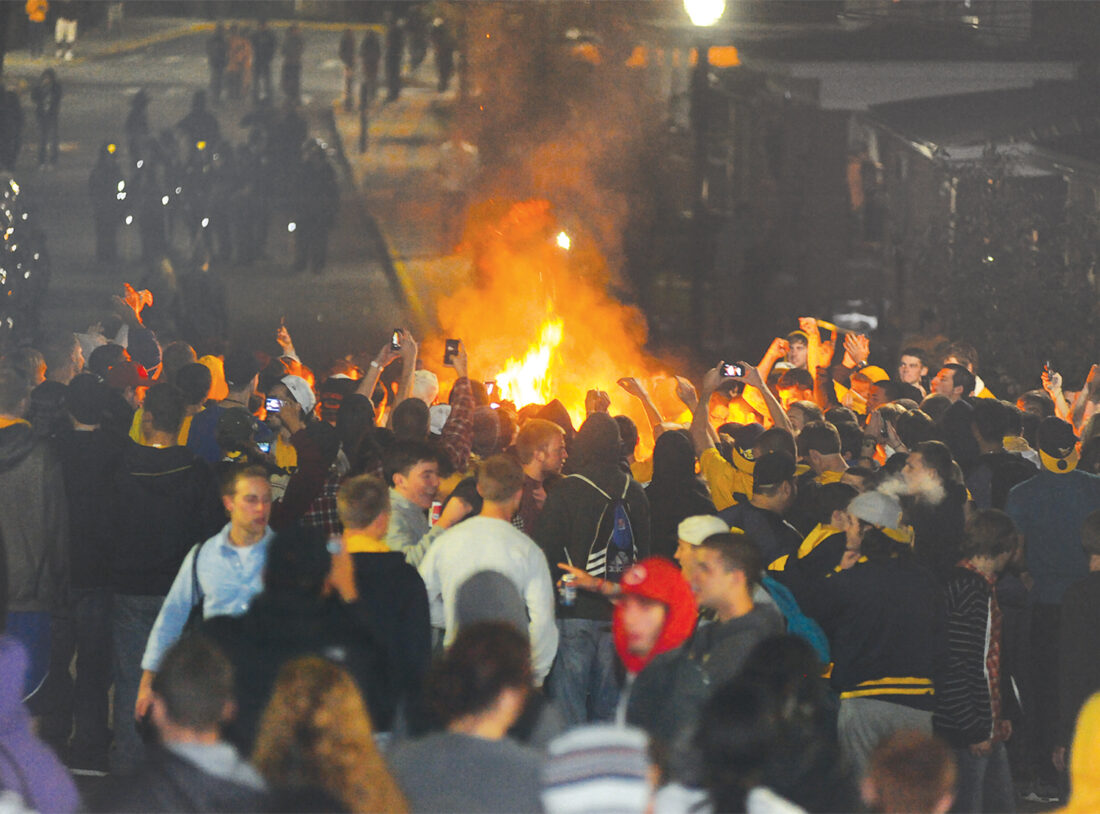
Photos by Ron Rittenhouse Fires are shown on Grant Avenue in Morgantown in May and October 2012. Morgantown ranked second nationally to Columbus, Ohio, between 2008 and 2012 in street fires, according to U.S. fire statistics. Los Angeles came in third.
MORGANTOWN — When was the first celebratory couch set alight in the city of Morgantown?
Likely every person who claims knowledge of that answer would tell you a different story about who did what, where and when.
What isn’t up for debate, however, is the intrepid, arsonous soul who first put flame to cushion set a collective blaze that’s burned through decades, and likely forever altered the city’s image.
To provide some perspective on how overwhelming the issue of nuisance street fires has been in Morgantown, the city ranked second nationally to Columbus, Ohio, between 2008 and 2012 according to U.S. fire statistics. Los Angeles came in third.
That’s actually down a spot from where the city ranked between 1997 and 2003. Data provided by the Morgantown Fire Department in 2004 showed the city led the nation with 1,129 intentional street fires in the six-year stretch. That averages out to roughly one intentionally set, nuisance fire every other day.
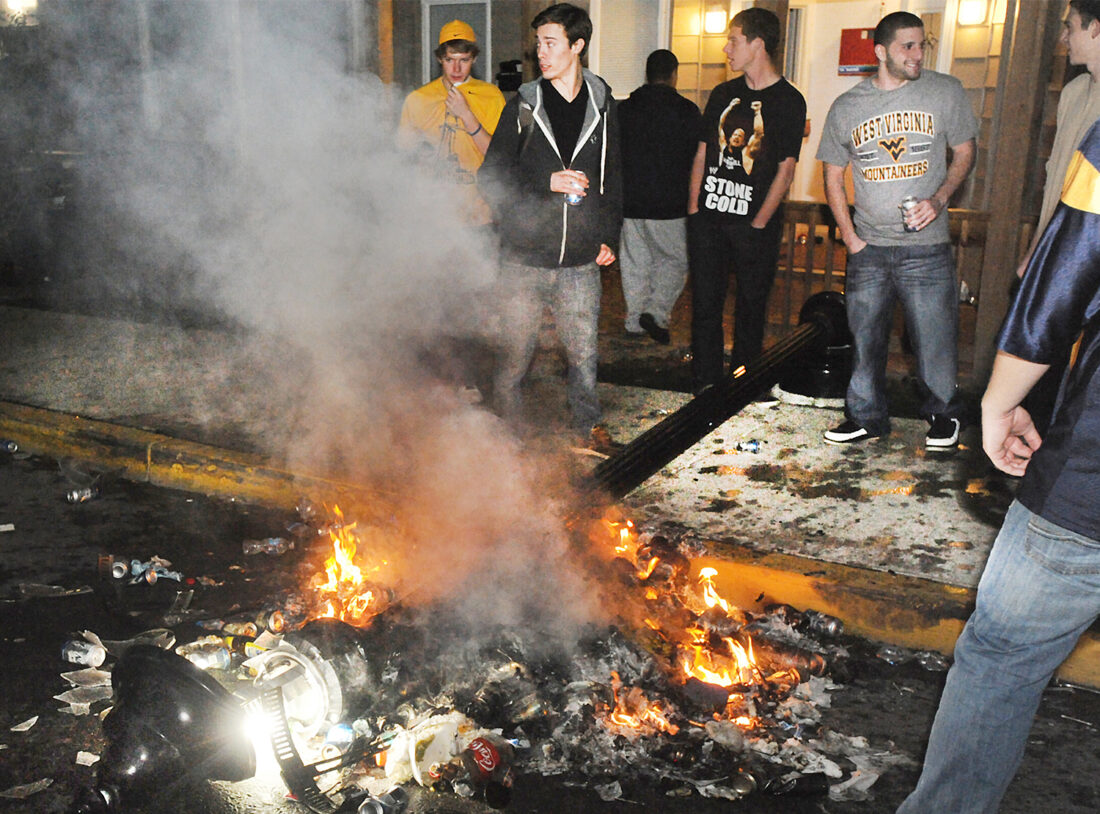
Fires are shown on Grant Avenue in Morgantown in May and October 2012. Morgantown ranked second nationally to Columbus, Ohio, between 2008 and 2012 in street fires, according to U.S. fire statistics. Los Angeles came in third.
Of course, that’s not how such things work.
The fires came in bunches — like the 223 that occurred between Aug. 1 and Nov. 24, 2003.
Over the years, the flames have been a tribute to big Mountaineer victories, heartbreaking losses, random holidays, the death of Osama bin Laden, or just because.
“Virginia Tech 2002, the fire department responded to over 100 fires that night,” Morgantown Fire Marshal Jason Quinn said.
On the evening in question, WVU traveled to Blacksville on a Wednesday and knocked off the No. 13 ranked Hokies, sealing the 21-18 victory with a thrilling goalline stand.
As soon as the victory was secured, former Fire Chief David Fetty said he started getting dressed.
“I just knew we better get on the road,” he told The Dominion Post at the time.
Due to the size and increasingly rowdy temperament of the crowd and the amount of burning debris across the road, MFD personnel were ultimately forced to lob water onto the entire scene while dodging the beer bottles and other debris coming back at them.
That’s just one notable example.
The Dominion Post archive is full of stories recounting 20, 30, 40 fires over the course of an evening.
“They could just light them faster than we could put them out,” current MFD Chief Gary Freshour said. “911 would just keep a running queue, and as soon as you would put one out, they would give you another address and you never stopped.”
Tallying up overtime, wear and tear on vehicles and other operating expenses, Quinn estimates street fires have probably cost the city of Morgantown “easily over a million dollars” in the last 25 years or so.
It was an untenable situation.
But around 2013, things started to change.
Already cognizant of the cost and obvious danger of spontaneous arson outbreaks, the city and university became acutely aware that street fires — and in particular burning couches — had become the symbol of the University City.
One evening in 2014, while presenting before the West Virginia Home Rule Board, former Morgantown City Manager Jeff Mikorski held up a T-shirt that read “where greatness is learned and couches are burned.”
It would ultimately be through Home Rule –which gives cities flexibility within state law to tackle specific, unique issues — that the city struck its most effective blows against the unwanted tradition.
As part of its initial Home Rule application in 2014, Morgantown outlawed having upholstered furniture outdoors.
A year later, the city used Home Rule to give arrest powers to city fire marshals — giving them operational authority on par with state marshals.
These initiatives were coupled with a change to the city’s malicious burning ordinance that not only lowered the legal bar on what constituted such a charge, but increased the fines to a minimum of $1,000 and a maximum of $2,000.
All this was backed up by educational efforts through both the city and university. A 12-year old YouTube video titled “Save a couch, don’t burn one,” remains online as an example.
And over time, the fires have largely burned themselves out.
According to Quinn, there were 12 street fires in all of 2024.
This past weekend, WVU rallied from behind to beat rival Pitt in overtime in Milan Puskar Stadium – an outcome that would have set the city ablaze once upon a time.
There were three fires reported, resulting in two $1,000 malicious burning citations — one for WVU student Luke Watson and one for Washington & Jefferson College (Pa.) student Ryan Lane.
As a word of warning, Quinn offered a couple points going forward.
One — he and his deputies, bolstered by personnel from the state fire marshal’s office, are on patrol looking for this kind of activity.
Two — just about everything is on camera.
“If I could offer one piece of advice, enjoy the games, enjoy the town and celebrate responsibly,” he said. “Because if I can prove, or one of my deputies can prove, that you’ve been involved in something like this, we will prosecute you.”

